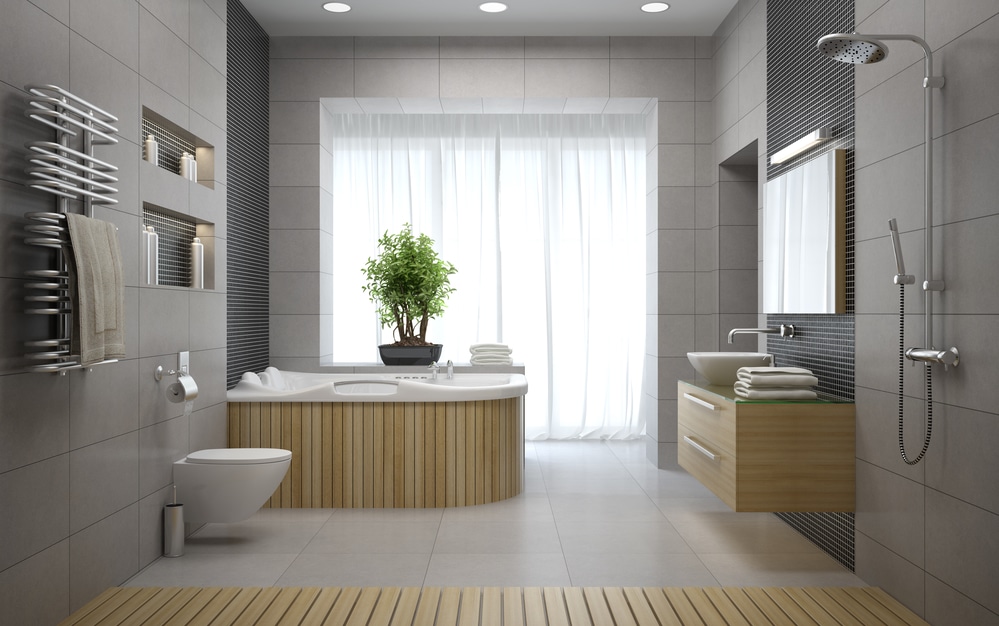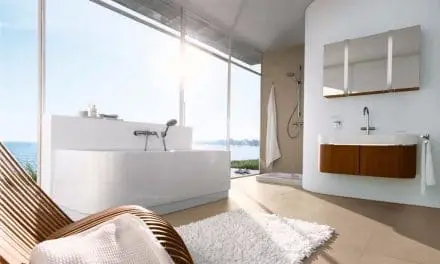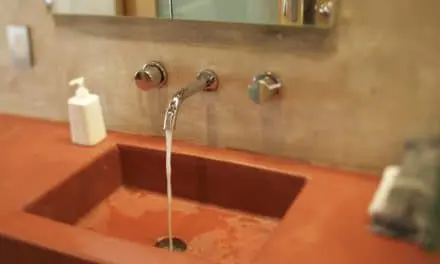Did you know bathrooms are by far the main source of water use in the home, accounting for nearly 75% of total consumption? Clearly, it’s a vital space for incorporating sustainable design. Beyond reducing water use, consider all of the other ways you can go green in the bathroom: install an energy-efficient exhaust fan, choose a reclaimed wood vanity (or adapt an old dresser), install a greywater system that waters your garden with your shower water – the list goes on and on! Here’s how to green-ify the top 10 bathroom trends according to the 2017 Kitchen & Bath Design Trends Report completed by the National Kitchen & Bath Association (NKBA).
#1 Contemporary and Transitional-styled bathrooms have overtaken Traditional style preferences.
Shaker style is gaining on Traditional, while Mid-Century Modern is emerging. Asian Fusion is a niche design, but design professionals who recommend it plan to do more of it in bathrooms.
Go Green: Use sustainable cabinetry with non-toxic glues and finishes.
Featured Brand: Crystal Cabinets
Why choose Crystal?
- Made in the USA.
- They select FSC certified wood.
- There are no-added urea formaldehyde materials.
- With water-based and low-VOC finishes, they are Greenguard-certified.
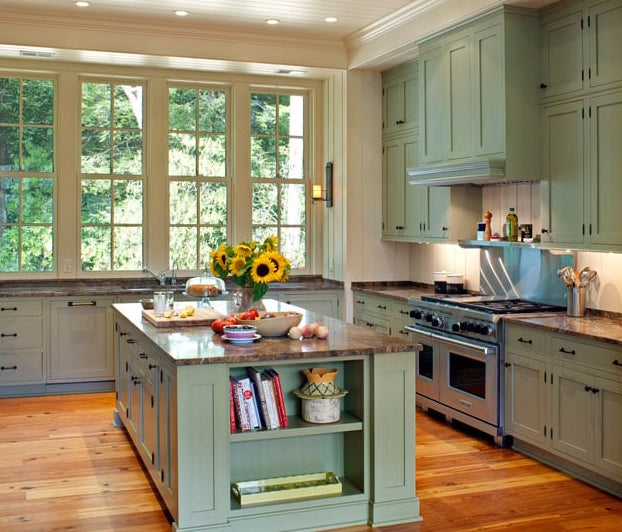
#2 Whites, off/whites and gray are by far the most popular bathroom color schemes.
Blue is emerging, with younger design professionals leaning more towards violets and purples. Stainless steel is niche and emerging.
Go Green: Use zero-VOC paints.
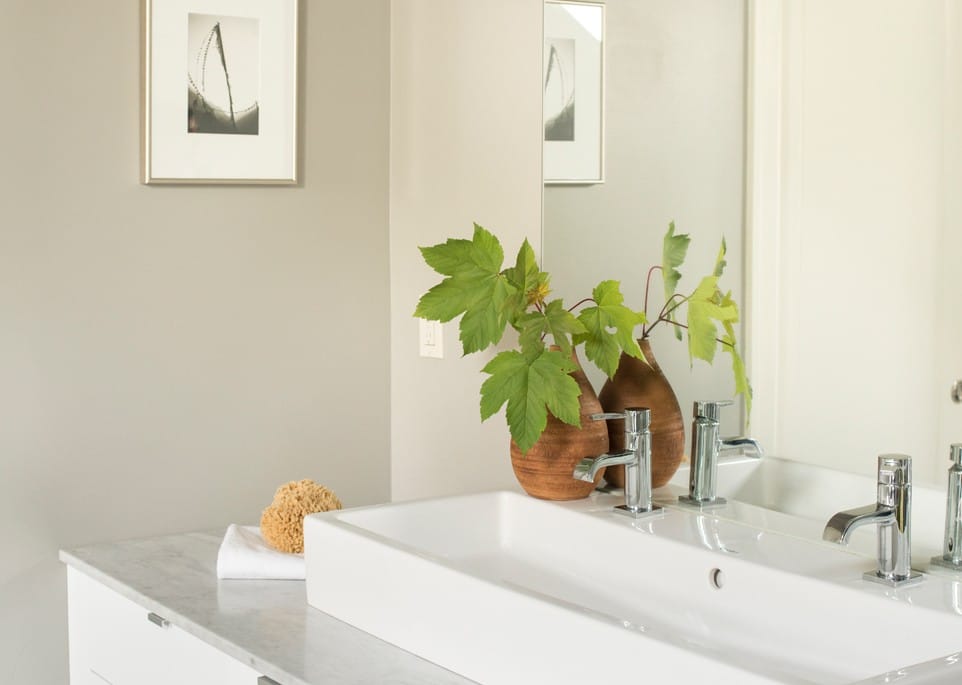
Featured Brand: Yolo Colorhouse
Their low odor paints have superior coverage and contain no VOCs (volatile organic compounds), no reproductive toxins, no chemical solvents, and no toxic fumes/HAPs-free. Committed to creating healthier paint and better color, choosing color for your home is simple with their harmonious, artist-crafted color palettes.
#3 Linen storage cabinets and wood vanities are the most commonly used bathroom storage solutions.
Floating vanities and open shelving are popular and increasing in popularity. Toilet topper cabinets are declining in demand.
Go Green: Choose products made from FSC Certified wood or reclaimed wood.
Featured Brand: Woodland Creek
Woodland Creek’s wood is primarily standing dead or reclaimed wood from farmers’ ranches or old barns. They’ve been using reclaimed wood for over ten years – long before reclaimed furniture became popular. They also import reclaimed wood from Eastern Europe, Mexico, Indonesia, China, California, Utah, and Colorado. When you combine a wood from Eastern Europe with a wood from California or Michigan, you have a look unlike any other and rustic furniture like any other.

#4 Ceramic tile flooring is most popular, but high-quality vinyl appears to be emerging.
Go Green: Stick to sustainable ceramics (vinyl is terrible for the environment).
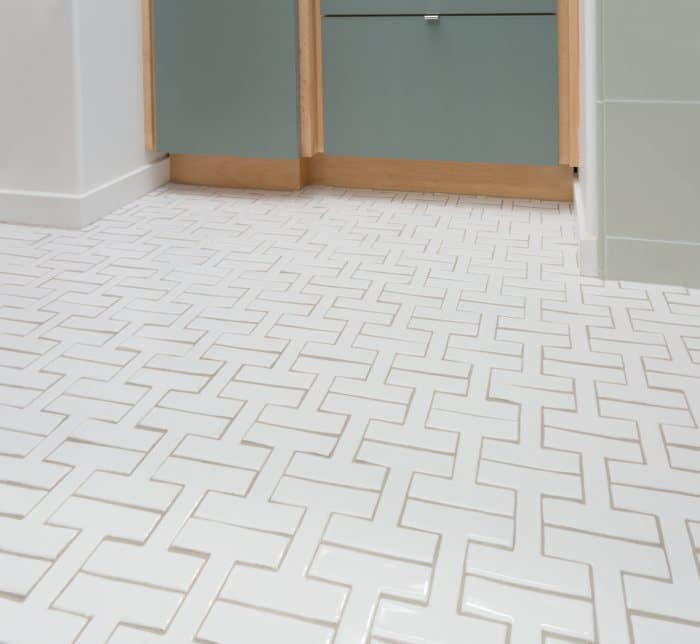
Featured Brand: Fireclay Recycled & Handmade Tile
At Fireclay, their goal is to make amazing tile exactly the way you want it. They are unique from anyone else in that they make every tile to order using recycled materials and sustainable manufacturing practices, all in California. They focus on working directly with you to create the residential project of your dreams, all in a timely manner and with amazing customer service.
#5 Undermount bathroom sinks are most desirable, with requests for vessel sinks continuing to wane, as well as pedestal sinks.
Trough sinks are emerging.
Go Green: Look for sinks made from sustainable materials.
Featured Brand: Native Trails
Native Trails works with artisans around the world to handcraft inspiring kitchen and bath products from natural, sustainable materials such as NativeStone™ concrete, recycled copper and reclaimed wood. Their sustainably made products can help earn points toward the USGBC’s LEED certification program. Their copper and concrete products are UPC/cUPC certified, facilitating their use in all types of projects.

#6 More than half of NKBA members surveyed said they eliminated a tub or whirlpool in a bathroom remodel over the course of the past year.
Yet half also specified a freestanding tub during that same period, and 60 percent expect to specify more of them in 2017.While tub/shower surrounds are maintained and updated when they already exist in a home, they are not being added to new bathrooms or completely remodeled bathrooms.
Go Green: Baths use far more water than showers, so elimination is greenest, but we know an occasional soak is a very good thing for the body and soul. If you want the option, choose an eco-friendly manufacturer.
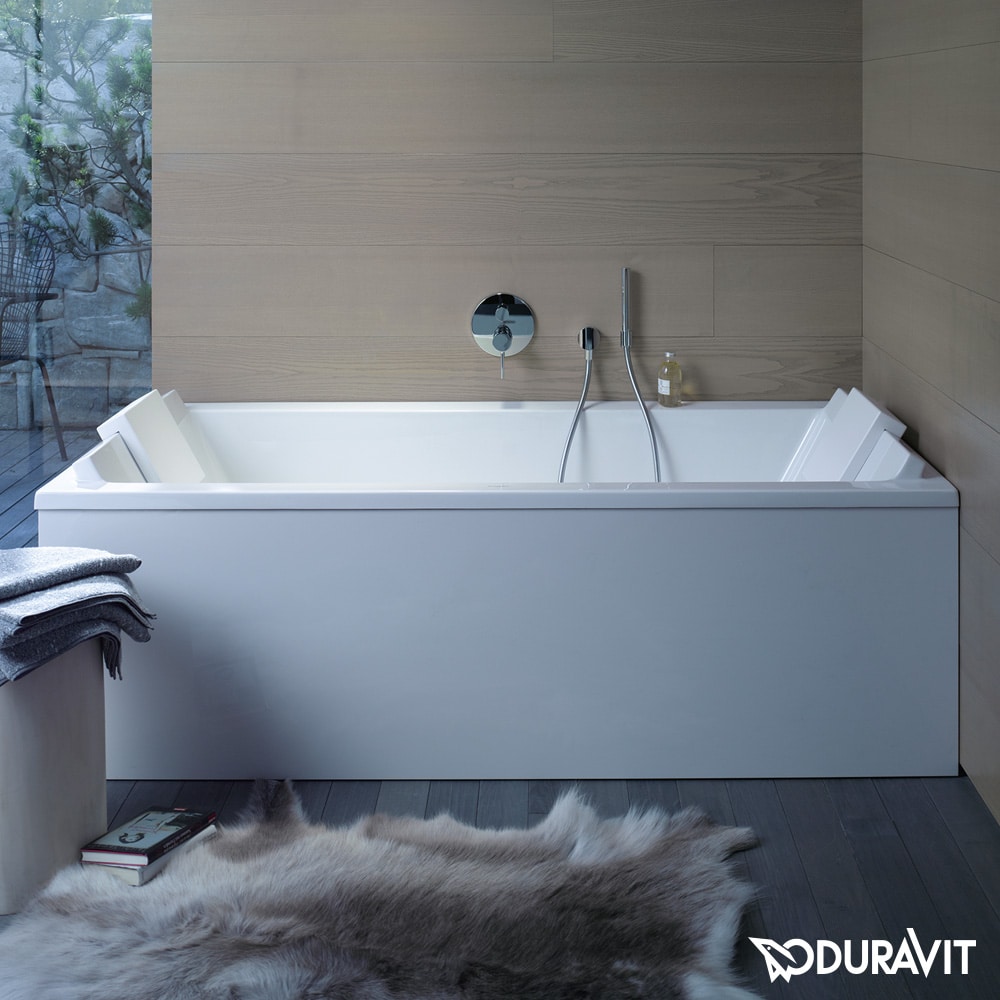
Featured Brand: Duravit
Duravit does everything possible to protect natural elements like water, air and soil – a process that starts with resource-saving manufacturing methods, which employ technologies such as water treatment and heat recovery. The logical continuation of this is manifested in the products themselves, which are water-saving. Even with new products, Duravit takes into consideration the impact on the environment and ensures that, whatever it manufactures, it uses natural resources responsibly.
#7 White fixtures are trending up, while bone/bisque colored fixtures are trending down.
Brushed brass and gold are emerging faucet finishes; designer faucet colors, while still quite niche, are emerging.
Go Green: Use water efficient fixtures.
Featured Brand: Grohe
For GROHE, the conscious, economical use of energy and resources is not just a challenge, but also a great pleasure. That’s why they channel all of their energy into masterminding sustainable systems. For example, their GROHE EcoJoy™ technology has long been a self-evident part of many of their fittings and showers. It helps save up to 68 percent of water used – and truly lives up to its name.

#8 The most popular amenities for the bathroom are in the arena of safety and comfort: e.g., comfort heights, shower seats, lighting in showers and no-threshold showers.
Emerging amenities are smart toilets, smart toilet seats, music in the shower, easy maintenance features, and radiant floor heating.
Go Green: Run with the emerging trend of radiant floor heating – it’s much more energy-efficient.

Featured Brand: ThermaRay
Radiant heat is something we are all familiar with. Think of the way the world is warmed – a direct transference of heat from the sun to the Earth, without fans, pumps or hoses. Silent, motionless and invisible.
A Therma-Ray environment works exactly the same way. Unlike conventional heating, our system automatically warms people and objects first, not the air. Just like the sun does: naturally and efficiently. And that’s what makes Therma-Ray so smart.
#9 Water-saving toilets and faucets are becoming more mainstream.
Go Green: This trend IS green. Yay!
Featured Brand: Niagara
With its groundbreaking Stealth Technology, the Stealth® toilet has proven performance using a mere 0.8 gallons per flush. With a vacuum-assist flush technology, water fills the inner chamber while air is pushed back into the patented air transfer tube. This action pressurizes the trapway, readying the toilet for a powerful and quiet flush. When the water leaves the inner chamber, it forcefully pulls air from the trapway up through the air transfer tube and creates a vacuum-assisted pull, accelerating the force of the water and waste flowing through the trapway. Once the flush is complete, the system refills and sets up for the next flush.
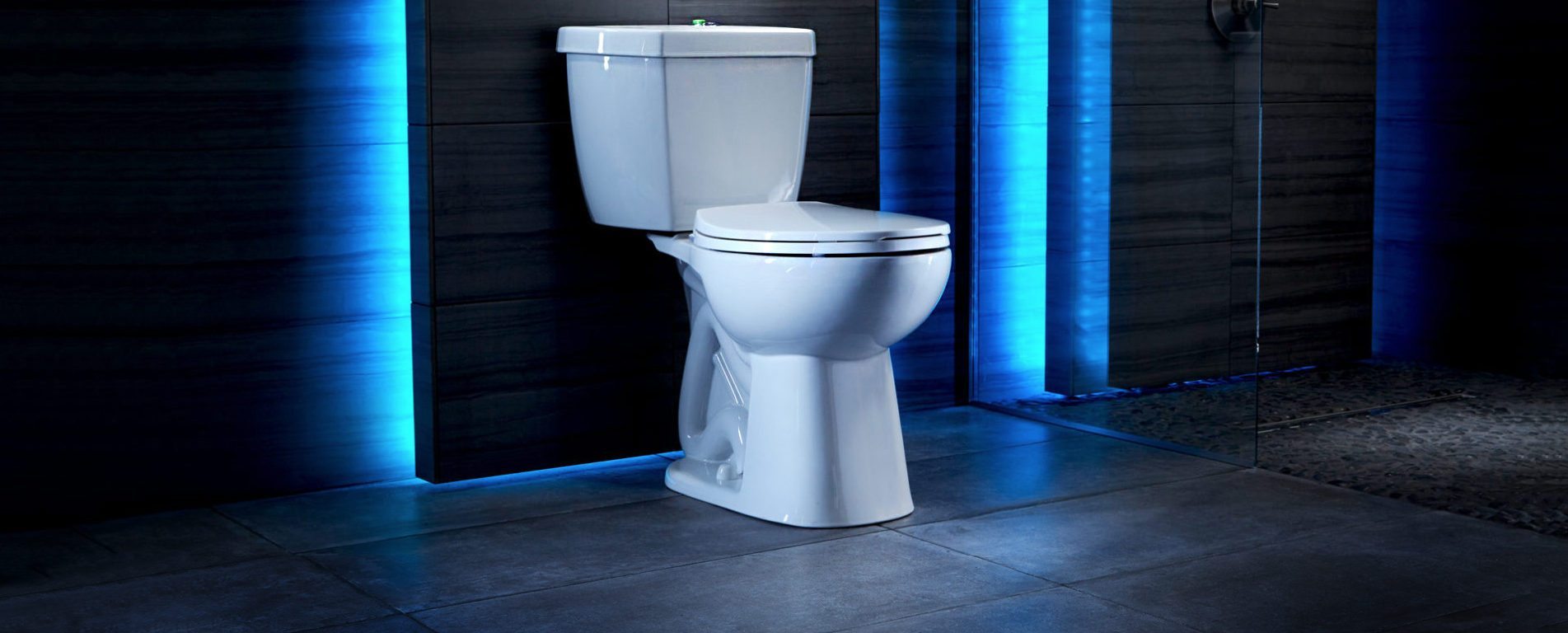
#10 Distributed video and audio and wiring pathways for future integration are still niche in the bathroom, but emerging.
Go Green: Ask your electrician to wire one size up.

According to the Copper Development Association: “Installing wire only one size larger than has been required by the National Electrical Code increases energy efficiency with dramatic paybacks. This simple technique can yield quick paybacks while increasing the flexibility of the installation. By increasing the wire size, reduced power losses offset the cost of the wire and produce savings on energy costs.”
Hopefully this helps you see there are green alternatives for every design decision!
Learn more:
- A 7-Step Checklist for an Eco-Friendly Bathroom Remodel
- All You Need to Know About Low-Flow Toilets
- Eco-Myth-Busting: Do Low Flow Shower Heads = Low Water Pressure
The full 2017 Kitchen & Bath Design Trends Report is available for $99 to NKBA members ($499 for nonmembers) at NKBA.org/Research. An executive summary of the research is available free to NKBA Members.


